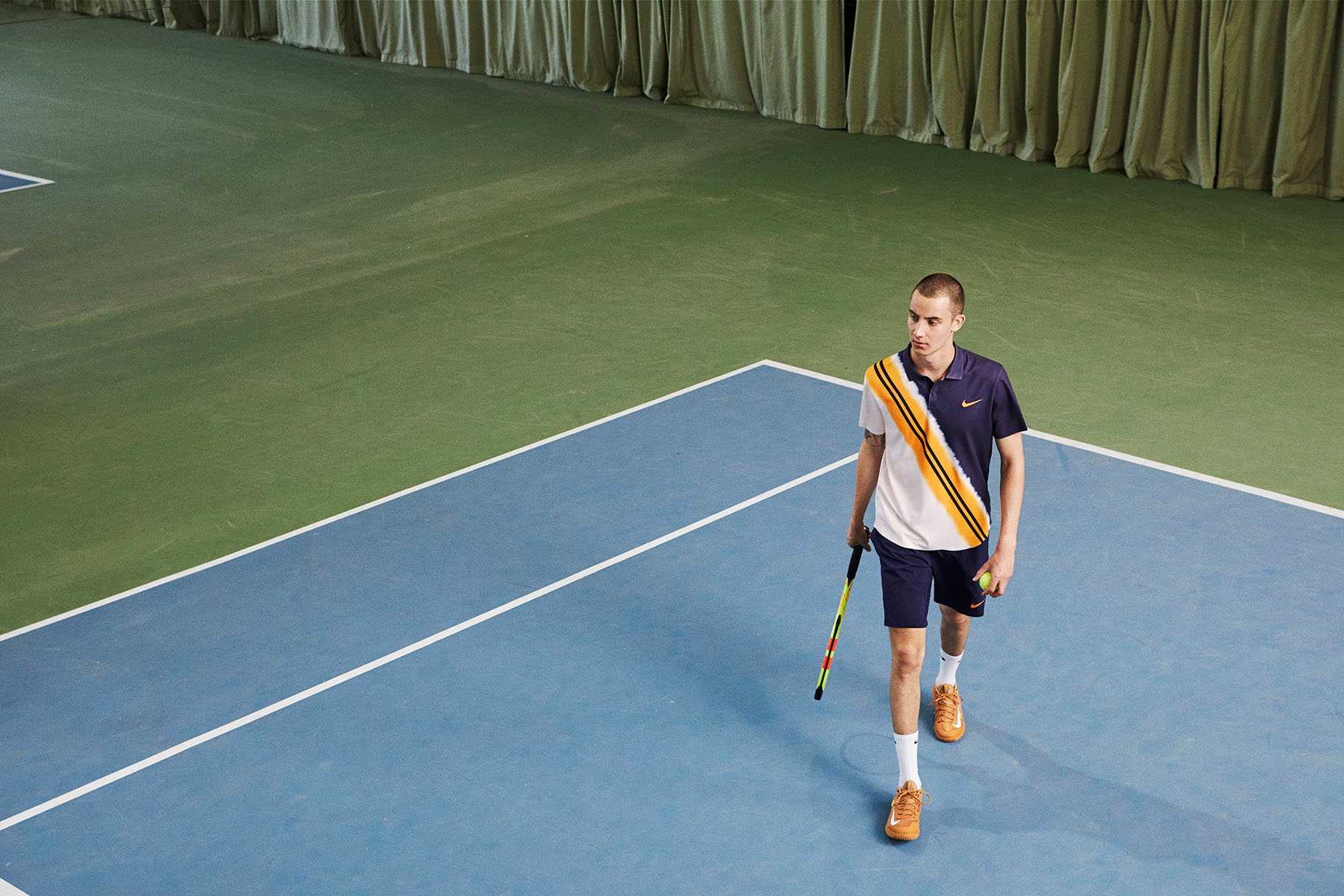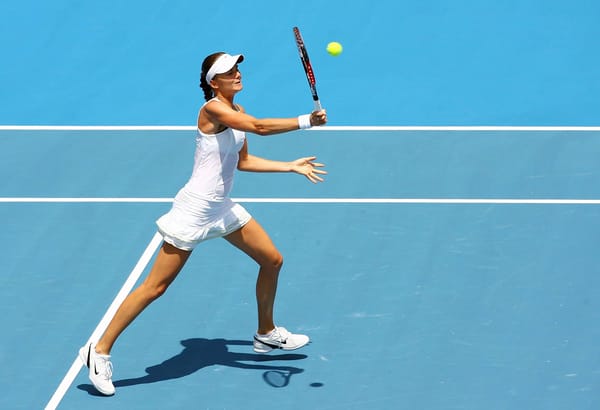Tennis Scoring for Beginners: A Basic Explainer on How to Win a Match
Sport & Activity
Boost your confidence on the court by learning these tennis-scoring terms.

As far as health benefits go, there's no shortage of reasons to try tennis. A 2017 British Journal of Sports Medicine study noted that racket sports (which include tennis) were associated with a reduced risk of cardiovascular disease. And a 2018 Mayo Clinic study found that consistent participation in tennis was associated with improvements in life expectancy.
On the other hand, a potential reason a person might stay away from the sport? It's a game chock-full of unique terms and rules, many of which can be somewhat perplexing for new players, explained Mario Musa, a U.S.P.T.A.-certified tennis instructor and founder of Tennis Racket Ball.
"Tennis scoring can be confusing to newcomers", he said. "But once [a player] understands the basics, it actually becomes quite simple".
Step onto the court with confidence by learning these key tennis-scoring rules.
(Related: Tennis Drills That Can Improve Your Game)
How a Tennis Game Is Structured
As Rhonda Costa, a P.T.R.-certified tennis coach and founder of Indie Tenis, explained, tennis starts out fairly straightforward: either two single players or two pairs of players step onto either side of a rectangular court divided by a net.
"At the start of a match, players flip a coin to see who, or which team, serves first", she noted. "Whoever wins the coin toss can decide to serve or pass on the serve. The other player (or players) can decide which side of the court they'd like to start the game on".
(FYI: the U.S. Tennis Association notes that either player or team can also spin a racket to decide serving order.)
Here's how a tennis game initially starts, according to Costa:
- The server gets two serves to start. "[The server should] always carry two balls", she added. "It's a big part of tennis etiquette!"
- If the serve goes over the net and into the box diagonally opposite yours, the person you're playing against has a single bounce before hitting it back. "Once a serve is in play, a player wins the point by keeping the ball over the net and inside the court lines or by making a great shot to where the opponent is unable to return the ball", Costa said.
- If the serve grazes the net but still lands in the box diagonally opposite yours, you get another serve. "It's called a LET", Costa added.
- If the serve doesn't land in the box opposite yours, you get your second serve. If you miss that too, you lose the point.
- "After each odd-numbered game, both players change ends of the court", explained Costa, adding that this keeps the play fair if there's wind or intense sunlight hitting the court.
Another must-know, according to Musa? "First things first: you're always going to start a game on the deuce side, or right side", he explained, adding that this applies to both the server and the returner. "Then you start the next point on the ad side, or left side. [After that] you alternate back and forth for the full game".
It's also worth adding that tennis courts can have varying dimensions and surfaces, depending on the level of play and type of match. For a deeper dive on courts, check out this explainer from the International Olympic Committee.
(Related: The Best Nike Shoes to Play Tennis on a Hard Court)
How to Score a Game of Tennis
Importantly, Costa added that the server must call out the score with their serve, which means that players need a solid understanding of the scoring system in order to compete.
"In tennis, you win a game if you win four points", said Musa. Here's how the scoring system works:
- 0 points = Love
- 1 point = 15
- 2 points = 30
- 3 points = 40
- 4 points = You won the game
"If you have a tied score, we use the word all", explained Musa. Here's an example:
- If players are tied 1–1, the score is 15-all
- If players are tied 2–2, the score is 30–all
"However, once we get to a 3–3 tie, [the sport of tennis] likes to complicate things and we use the word deuce", he added. "Don't say 40-all or everyone will know that you are a tennis newbie!"
But at deuce, Musa added that things can get even more complicated for tennis newcomers. "You have to win the game by two points", he noted. "If the server wins the deuce point, they will call the score ad-in. That means they have the [game-winning] point". (FYI: ad-in is short for advantage in.)
If the opponent wins that point, Musa explained that the score goes back to deuce. If the receiver wins a point, for their next serve they will call ad-out before beginning play. (Similarly, ad-out is short for advantage out.)
"Again, the receiver has to convert that point to win the game or it goes back to deuce, and it just continues that way until someone converts that point and then they win the game", said Musa.
How a Tennis Set and Match Are Scored
If a player or team wins a game (again, by two points), they'll need to win six games to win a single set.
As the U.S. Tennis Association notes, there are two types of sets: an advantage set and a tie-break set.
- In an advantage set, a player or team needs to win six games, by two, and there is no tie-breaking game at 6–6. If the score gets to 6–6, the set continues until a player or team wins by two sets.
- In a tie-break set, a tie-break game occurs if the score hits 6–6.
"A tie-breaker is treated like a game", Costa explained. "The first person to reach seven (by two) wins. The score is then recorded as 7–6 to finish the set".
To win the match, a player or team either needs to win two sets (in a best-of-three match) or three sets (in a best-of-five match).
How Long Does It Take to Learn Tennis?
"On average, it takes new players around three to four months to have the basic foundations set to feel confident on the court", said Costa. That said, Costa added that the biggest learning curve surrounds the physical demands of play itself, like perfecting grip location, swing and power. Understanding how a tennis match is scored should come much sooner than that.
Of course, having some extra assistance can make both processes speedier. "Learning tennis rules and scoring is best understood and practised in a formal setting, like a private tennis lesson or group class with a certified instructor", Costa said.
Words by Julia Sullivan, ACE-certified CPT














